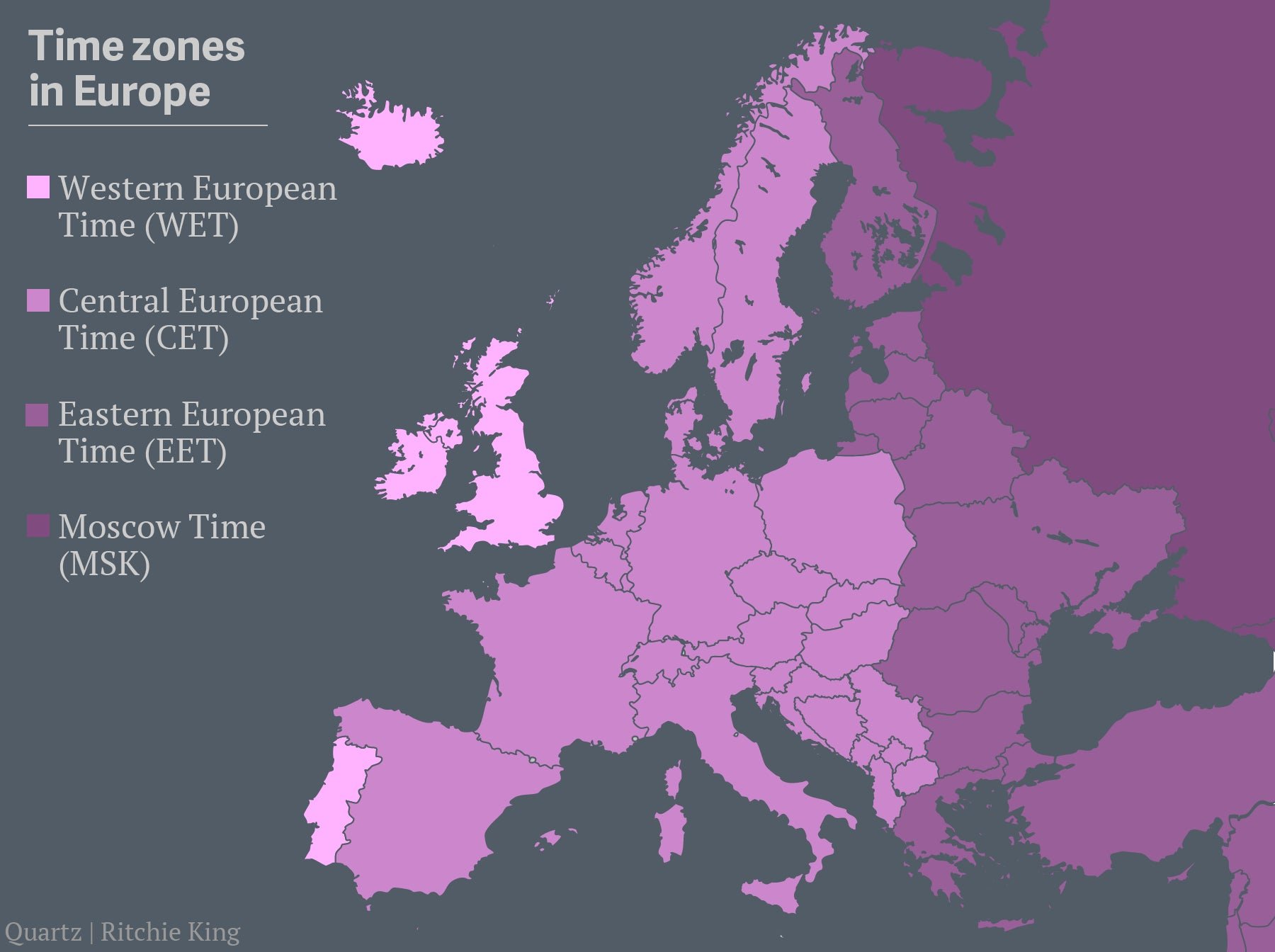Spain’s been at least an hour behind since World War II, and it shows
A social revolution—and a new time zone—may very well be upon Spain. A new report from (pdf in Spanish) a governmental sub-commission has found the need for major changes on how society organizes daily life. If congress legislates accordingly, Spain’s struggling workforce may get a welcome boost. On average, Spanish workers sleep one hour fewer than their European counterparts, as well as hour fewer than what the World Health Organization recommends. As a consequence, productivity is lower, and working accidents and absenteeism are higher than the EU average. Spanish workers who are absent three hours out of the standard workday also contribute to the lagging economy.


A social revolution—and a new time zone—may very well be upon Spain. A new report from (pdf in Spanish) a governmental sub-commission has found the need for major changes on how society organizes daily life. If congress legislates accordingly, Spain’s struggling workforce may get a welcome boost. On average, Spanish workers sleep one hour fewer than their European counterparts, as well as hour fewer than what the World Health Organization recommends. As a consequence, productivity is lower, and working accidents and absenteeism are higher than the EU average. Spanish workers who are absent three hours out of the standard workday also contribute to the lagging economy.
Back to Greenwich
Spain has lived under Central European Time, GMT+1 time since WWII when the regime, along with many other countries, adopted the German time zone and never changed it back. To make things worse, Spain also uses the controversial daylight saving time between April and October, two hours ahead of daylight and two and a half hours for the eastern side of the country.
There’s clearly a need for Spaniards to harmonize our biorhythms and work schedule with nature. But if you check the time zone for the Greenwich meridian, it matches almost perfectly with the east border of France, so why France does not suffer from similar problems?
The forces in conflict
Spain underwent industrialization and urbanization in an economy that, with the exception of tourism, was highly protectionist until the country begun its globalization in the early ‘80s. Nowadays, imports of goods and services represent close to 40% of GDP while exports are close to 39%. Most of the economy is globalized while the customs of many workers are still under the old labor order.
In some sectors, like retail or for professionals like lawyers, doctors and in small cities, the working hours are still from 9a.m.-2pm and 5p.m.-8pm. Many Spanish schools still have a long pause of three hours in the middle of the day. This originated in the 1940s when female participation in the labor force was very low. In the last 30 years, women’s workforce participation has passed from 3.9 million to 7.6 million today and it is clear that a longer school day is urgent, especially when children are under 12 years old and need transport.
In addition to the wrong time zone and the obsolete work hours, many companies erroneously evaluate workers on the number of hours they put in rather than more qualitative criteria. Even when the hours of a company is similar to its EU peers, workers still stay late.
The sub-commission for the reform
Back in 2003, the National Commission for the Rationalization of Horary (a private association) made suggestions that Spain return to GMT time and make working hours between 7:30 a.m.-9:00 a.m. and 4:30 p.m.-6:00 p.m. with a 45-60 minute break. Once the government changed, the plans were abandoned and, the government, accustomed to waiting for an EU initiative, finally attended the claims of many sectors and created the sub-commission this year, in theory, solve the problem. The hearings were attended by almost 40 people representing everyone, from the Spanish business chamber to unions, parent associations, foundations, universities and child and women rights defenders.
Nuria Chinchilla, professor of IESE business school and director of the International Center for Work and Family (ICWF), spoke to the sub-commission but is cautious on whether this this reform will actually go ahead. She thinks “a similar change of course is needed as when smoking in public closed spaces was banned.” Trusting little in the system, I am much more concerned that without decisive actions and more activism, this necessary reform could be derailed in a similar way to the one of 2003.
As every year, on Oct. 27, the country will reduce its two hour difference with GMT by one hour. It’s a good occasion for the Spanish government to modernize both work and school hours. Will this time Spain miss this opportunity again?